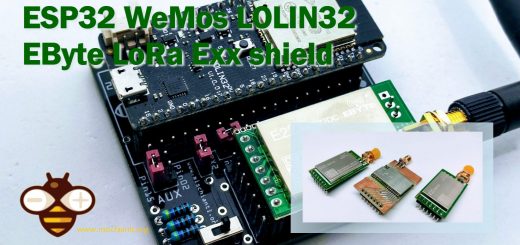Home › Forums › The libraries hosted on the site › EByte LoRa e32 UART devices sx1262/sx1268 › E32-900T20D Lora repeater settings › Reply To: E32-900T20D Lora repeater settings
My idea was the sender sends the message, if the repeater receives it, the repeater wakes up the radio module and arduino, reads the message, then it resends it.
The sender waits for 5 seconds after sending, and if it receives the same message back, it uses that as a confirmation that the message was received by repeater, if it doesn’t receive it back, option to resend.
I will look into fixed mode with addressing, could be cool if multiple devices can use repeater to direct messages to devices with seperate channels or addresses, and have confirmation end node received message.
I have had some issues getting arduino to talk to pico, with some “unicode” errors and such… but I think I have narrowed it down to timing issues. My case is different than linked thread as my repeater microcontroller and e32 module are both sleeping, so I had to add calculated delays to sender and repeater to make sure there were no conflicts…
I will be playing around with settings more, as well as take a more in depth look at code from linked thread to see if I can figure out whats going on…
In linked thread, code is trying to send messages very frequently. To me this is not food practice for lora devices. And in some countries there are limits to the amount of data sent in a certain time period. In my opinion 1 message per 30 seconds sent from each device should be max. This also allows devices to time each other better and spend more time listening.
I have been using Pi Pico and Micropython for several years, but completely new to arduino and Arduino IDE. So learning as I go…
Attatched are photos of schematic and 3d view of PCB I am designing for low power Arduino repeater. I have tested this setup on breadboard and it works fine. The 3.3v LDO I am using can supply up to 250mA, and I have not had any issues with power using this LDO. I have put place for 100uF capacitor on PCB incase it’s needed.
On breadboard I am not using pullup resistor on TXD and RXD and it works fine. I did need to use pullup on AUX.
On Pi Pico, I needed pullups on TXD, RXD, and AUX. I believe Pico’s internal pullup is much higher value than ATMEGA328p… Unsure though.
I put optional pullup resistor spaces for all pins of E32, as well as I2C header for BME280 sensor (in case a different I2C sensor installed without pullup already.)
M0, and M1 do not need pullup correct? I am not using pullup on breadboard setup, but decided to put space for them on PCB in any case it’s ever needed.
PCB size was designed for this box: 115 x 90 x 55 mm I did not put any mounting screw holes, as the space inside the box is perfect fit. SMA connector will protrude into hole drilled in box, with o-ring and washer.
5v solar cell will be sealed to lid of box, and charge battery when sunny. a 200mA solar panel should keep LiPo charged as this device only uses <1mA when sleeping…
-
This reply was modified 1 year, 9 months ago by
g0730n.






